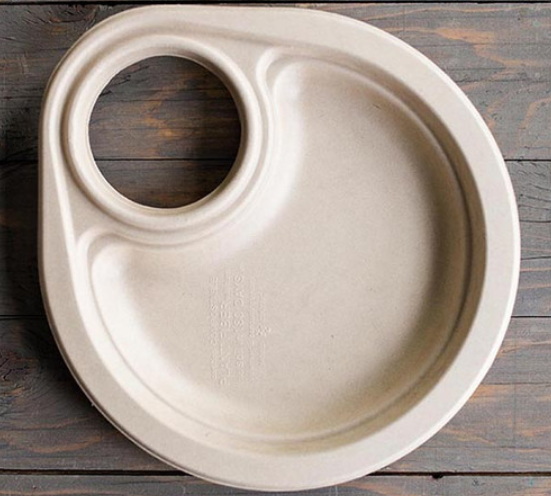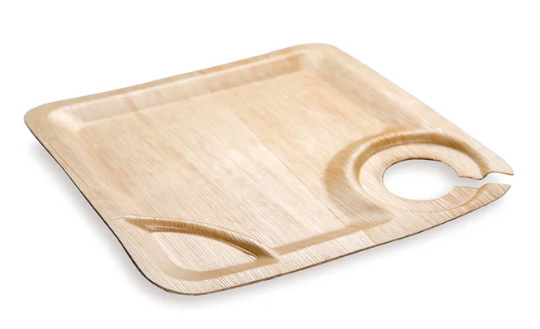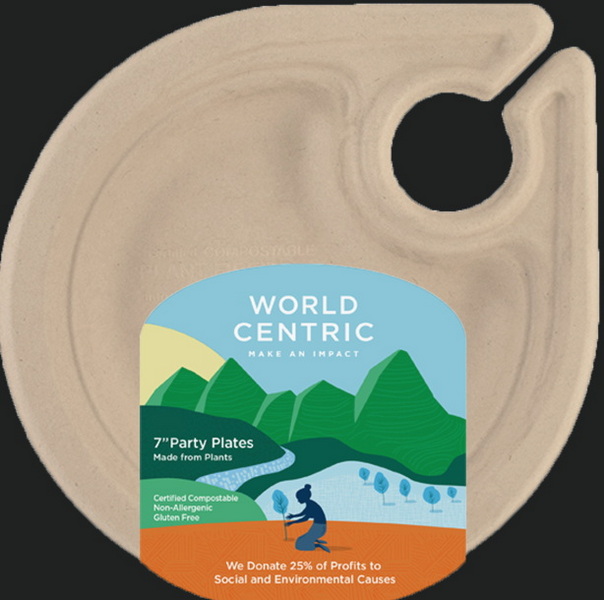
Content Menu
● Introduction to Disposable Plates with Wine Holders
>> Materials Used
● Environmental Impact of Disposable Tableware
>> Problems with Plastic Tableware
● Eco-Friendly Alternatives
>> Biodegradable Plates
>> Benefits of Eco-Friendly Disposable Plates
● Innovations in Eco-Friendly Tableware
>> Sustainable Production Practices
>> Consumer Awareness and Demand
● Challenges and Future Directions
>> Addressing Cost Concerns
>> Future Innovations
● Conclusion
● FAQ
>> 1. What materials are eco-friendly disposable plates with wine holders made of?
>> 2. How do biodegradable plates reduce environmental impact?
>> 3. Are bamboo plates with wine holders durable?
>> 4. Can sugarcane bagasse plates be used for hot foods?
>> 5. Are eco-friendly disposable plates more expensive than traditional options?
In recent years, the use of disposable plates with wine holders has become increasingly popular for events, parties, and gatherings. These plates offer convenience and elegance, allowing guests to enjoy their wine and food simultaneously. However, the question remains: are these disposable plates eco-friendly and sustainable? In this article, we will delve into the materials used to make these plates, their environmental impact, and explore eco-friendly alternatives.

Introduction to Disposable Plates with Wine Holders
Disposable plates with wine holders are designed to provide a practical and stylish solution for serving food and drinks at events. They come in various materials, including plastic, bamboo, and paper, each with its own set of advantages and disadvantages.
Materials Used
1. Plastic Plates: These are lightweight and inexpensive but contribute significantly to plastic pollution. Plastic plates can take centuries to decompose and often end up in landfills or oceans, harming marine life and ecosystems.
2. Bamboo Plates: Made from natural bamboo, these plates are biodegradable and eco-friendly. They are durable and compostable, making them a sustainable choice for events.
3. Paper Plates: While paper plates are biodegradable, they may not be as durable as bamboo or plastic. However, they are compostable and can be made from recycled materials, reducing waste.
Environmental Impact of Disposable Tableware
Disposable tableware, including plates with wine holders, has a significant environmental impact. Plastic plates, in particular, contribute to plastic pollution, which harms marine life and contaminates the food chain.
Problems with Plastic Tableware
- Long Decomposition Time: Plastic takes hundreds of years to decompose, leading to accumulation in landfills and oceans.
- Microplastics: As plastic breaks down, it forms microplastics that contaminate water and soil, posing threats to wildlife and human health.

Eco-Friendly Alternatives
To mitigate the environmental impact, eco-friendly alternatives are gaining popularity. These include plates made from biodegradable materials like sugarcane bagasse, bamboo, and palm leaves.
Biodegradable Plates
- Sugarcane Bagasse Plates: These are made from a byproduct of sugarcane processing and are 100% compostable. They are sturdy, microwave-safe, and reduce waste significantly.
- Bamboo Plates: As mentioned earlier, bamboo plates are durable, biodegradable, and compostable, making them an excellent eco-friendly choice.
- Palm Leaf Plates: These plates are made from fallen palm leaves and are fully compostable. They offer a natural, sustainable option for events.
Benefits of Eco-Friendly Disposable Plates
Eco-friendly disposable plates with wine holders offer several benefits:
1. Reduced Waste: These plates break down naturally, reducing landfill waste and minimizing environmental pollution.
2. Sustainability: Made from renewable resources, they support sustainable practices and reduce reliance on non-renewable materials.
3. Convenience: They provide the same convenience as traditional disposable plates but with a lower environmental impact.
Innovations in Eco-Friendly Tableware
The demand for eco-friendly tableware has led to innovations in materials and manufacturing processes. Companies are now exploring new biodegradable materials and improving production methods to make these products more affordable and accessible.
Sustainable Production Practices
- Renewable Energy: Some manufacturers are using renewable energy sources to power their production facilities, reducing carbon emissions and supporting sustainable practices.
- Minimal Waste: Production processes are optimized to minimize waste, ensuring that as much material as possible is used in the final product.
Consumer Awareness and Demand
Consumer awareness about environmental issues is driving demand for eco-friendly products. As more consumers choose sustainable options, companies are incentivized to develop and market environmentally friendly disposable plates with wine holders.
Challenges and Future Directions
Despite the benefits of eco-friendly disposable plates, there are challenges to overcome. One of the main hurdles is cost; eco-friendly options are often more expensive than traditional plastic plates. However, as demand increases and production scales up, prices are expected to decrease.
Addressing Cost Concerns
- Economies of Scale: As more companies enter the market and production volumes increase, economies of scale can help reduce costs.
- Government Incentives: Governments can offer incentives for companies that adopt sustainable practices, further reducing costs and encouraging innovation.
Future Innovations
Future innovations may include developing new biodegradable materials that are even more durable and cost-effective. Additionally, advancements in composting technologies could make it easier for consumers to dispose of these plates sustainably.
Conclusion
In conclusion, while traditional disposable plates with wine holders may not be eco-friendly, there are sustainable alternatives available. Plates made from biodegradable materials like bamboo, sugarcane bagasse, and palm leaves offer a practical and environmentally responsible solution for events and gatherings. By choosing these eco-friendly options, we can reduce plastic waste and support a healthier planet.

FAQ
1. What materials are eco-friendly disposable plates with wine holders made of?
Eco-friendly disposable plates with wine holders are typically made from biodegradable materials such as bamboo, sugarcane bagasse, and palm leaves. These materials are compostable and reduce environmental waste.
2. How do biodegradable plates reduce environmental impact?
Biodegradable plates reduce environmental impact by breaking down naturally, thus reducing landfill waste and minimizing pollution. They are made from renewable resources, supporting sustainable practices and reducing reliance on non-renewable materials.
3. Are bamboo plates with wine holders durable?
Yes, bamboo plates with wine holders are durable and biodegradable. They are designed to withstand moderate use while being eco-friendly, making them suitable for various events.
4. Can sugarcane bagasse plates be used for hot foods?
Yes, sugarcane bagasse plates are microwave and oven-safe, making them suitable for hot foods. They are sturdy and can handle high temperatures without deteriorating.
5. Are eco-friendly disposable plates more expensive than traditional options?
Eco-friendly disposable plates may have a slightly higher price tag than traditional plastic or paper plates. However, they offer significant environmental benefits that many consumers find well worth the investment.

















